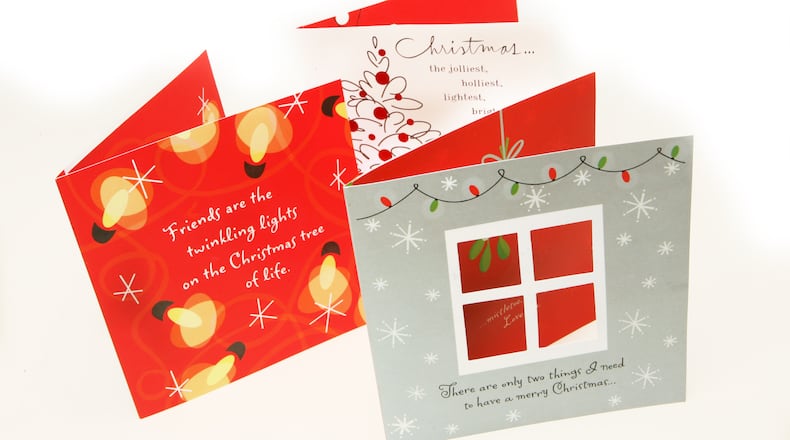Like fruitcake and Dick Clark’s New Year’s Rockin’ Eve, the Christmas card is a holiday tradition that just won’t quit.
Granted, the high-flying days of old are gone when you could use cards as an excuse to bore literally everyone you knew with a Xeroxed “family” letter tucked inside — that’s what Facebook is for now, kids — but the bubble hasn’t burst. Not by a long shot.
“Christmas is the largest card-sending holiday of the year, with approximately 1.6 billion cards sold in retail stores,” said Megan Baucco of American Greetings, the world’s largest greeting card company. “Over the past 5 years, American Greetings has had relative stability with minor year-over-year fluctuations in regards to card-sending for the holidays.”
(And that doesn’t even take into account all the homemade cards anyone with a crafting room or a Shutterfly account can send out on their own).
RELATED: Emory professor explains why we get — and give — such bad Christmas gifts
On the one hand, that fairly ginormous number’s down from the even more ginormous 2 billion Christmas cards sent annually in the early 2000’s. But back then, you couldn’t just text “Mry Xms!” to everyone you’d ever met and be done with it:.
Here's a by-the-numbers look behind that big number:
30: Number of greeting cards the average household purchases annually.
7 million: Number of St. Patrick's Day cards sold annually, ninth most among all holidays — and a teeny .4 percent of the Christmas card total. The No. 2 holiday, by the way, is Valentine's Day, with annual sales of 145 million ooey-gooey cards.
29.11: Dollars and cents average spending on cards and postage in 2014, up by $1.87 from five years earler.
65: Percentage of people in a 2013 Pew Research Center survey who planned on sending Christmas or holiday cards. Those age 65 and over (73 percent) were most likely to do so, but more than half of millennials surveyed (59 percent) also said they planned on sending cards (Interestingly, the exact reverse was true for Christmas trees. At 82 percent, respondents age 18-29 were most likely to say they intended to put up a tree, while the 65-plus group was least likely at 73 percent. Most likely because the prospect of addressing envelopes and licking stamps is less daunting than chopping down a tree and sprinkling it with tinsel.)
16: The measly percentage of all Pew survey respondents who planned on going caroling.
1.79 billion: Number of monthly active Facebook users in the third quarter of 2016. That's even more than the total number of Christmas cards that will be sold this year. But that doesn't mean social media and mobile communication are about to render them obsolete. Experts say there are still certain events for which only a printed card will do — death, a wedding anniversary (especially your own), Christmas for close friends and relatives — and that sending a card might actually feel even more meaningful now that it's so easy not to. Meanwhile that long-ago high school classmate whose Facebook wall you quickly post "Happy Birthday!" on once a year wasn't ever likely to get a printed holiday card from you anyway.
In some cases, though, you might do both now.
“American Greetings sees consumers turning to digital greetings as a complement to paper greeting cards, not a replacement,” said Baucco. “Many consumers will celebrate an occasion by sending both a paper and digital greeting.”
About the Author
Keep Reading
The Latest
Featured


